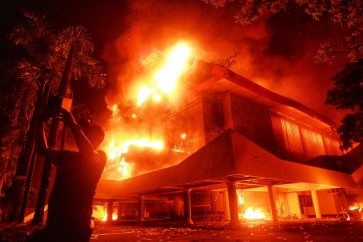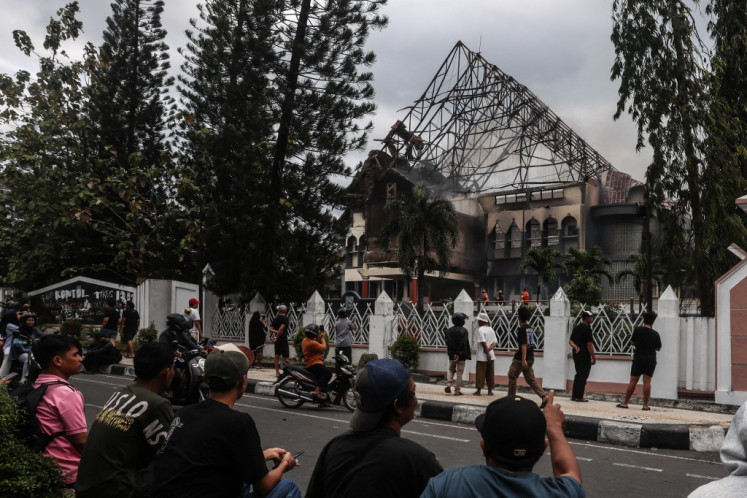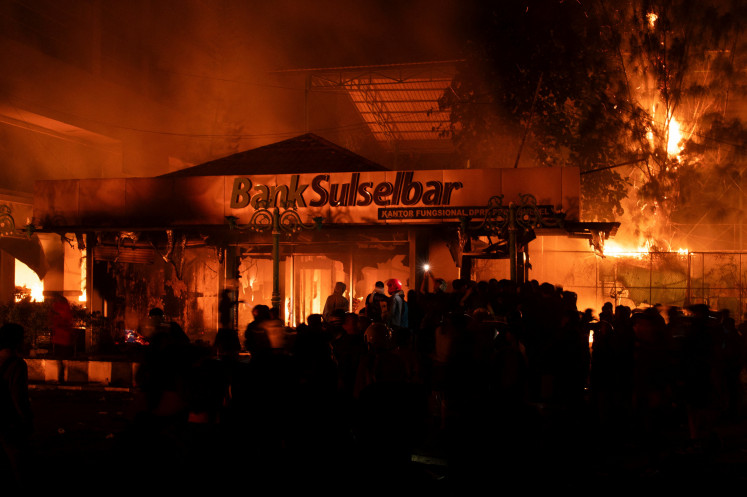Popular Reads
Top Results
Can't find what you're looking for?
View all search resultsPopular Reads
Top Results
Can't find what you're looking for?
View all search resultsNew hotel room supply in Bali affects occupancy rate
With a continuous steep increase in supply, local hotels will struggle with pressure on occupancy rates over the coming years, recent market research shows
Change text size
Gift Premium Articles
to Anyone
W
ith a continuous steep increase in supply, local hotels will struggle with pressure on occupancy rates over the coming years, recent market research shows.
The Bali Hotel and Branded Residences Update, released recently by leading consulting groups Horwath HTL and C9 Hotelwork, shows that this year, the island gained 6,000 new hotel rooms, an addition to the existing 24,000 available rooms recorded last year.
'A further, and much more significant, 6,000 new rooms are expected to enter the market in 2013 [around 4,000 of which have already opened this year]. If this eventuates Bali inventory will top 30,000 rooms,' the report states.
It also mentions that from 2014 until 2016, the development of new three-, four- and five-star hotels will contribute around 4,000 new rooms.
'Of the new hotel developments until 2016, 50 percent is happening in the area of Nusa Dua, Bukit [Uluwatu], Pecatu, Tanjung Benoa and Jimbaran. Kuta, Legian and Seminyak, which already have the majority of hotel rooms, are not far behind and will house 35 percent of the projected new supply,' said Bill Barnett, managing director of C9 Hotelworks.
The remaining 15 percent of new supply will be dispersed around the island, in the undersupplied north, central and eastern areas.
Looking at distribution of new hotels to 2016 by positioning, the mix is well spread and maintains the current proportions of three-, four- and five-star rooms, the report states.
In 2012, the bulk of new properties were at the lower end, or three stars or less, and in 2013 there is a greater number of four- and five-star properties scheduled to open.
'We're still seeing pressures on occupancy and room rates because of the new hotel rooms coming in. Clearly investors still believe that Bali has growth potential, as the government is coming with long overdue infrastructure improvements, like the airport expansion and the toll road. However, as we all know, it is still a long way to go,'
Barnett told Bali Daily.
According to the report, occupancy fell to below 70 percent (year-to-date June this year) across the board, down 4 percent year-on-year.
Meanwhile, the average daily rate increased by around US$5 and revenue per available room is subsequently down $3 on the same period last year. It is expected that this negative trend will continue until the end of this year.
The report also states that between 2008 and 2012, Bali hotels showed consistent rate growth of 8 percent annually on average, while their occupancy has fluctuated, struggling with the high amounts of new supply opening on the island.
Horwath HTL's Matt Gebbie said that the keys to weathering any potential storm that might rain down on Bali in the next few years are that hoteliers should do focused development by building what makes sense in terms of positioning and size.
'They should also avoid price wars. Tourism numbers will increase, new properties will induce new demand, low-cost carriers will fly in more guests, so they should resist dumping prices.'
Another suggestion is to continue lobbying the government to improve infrastructure. New roads to open up the north and improve access to the east would be a great start.










